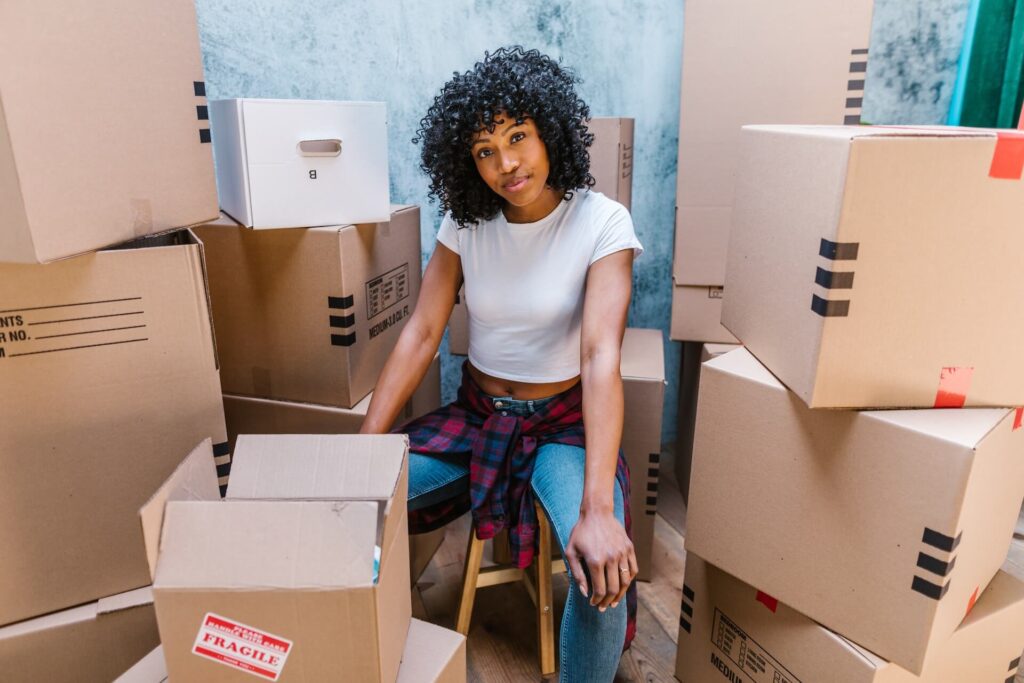A relocation process can be difficult, but it’s especially hard when you have to keep track of your belongings. Make sure your move goes as smoothly as possible with a thorough moving inventory checklist. That way, you won’t have to worry about a thing and have the best relocation experience. So, let’s check out how to create the ultimate relocation saver.
Making an inventory checklist when moving internationally can be simple, just like putting things down in a notepad as you travel from room to room. A more sophisticated option would be to take pictures or record videos of something in each room. Whatever strategy you choose, include everything on your wrapping inventory so that when you move into your new house, you have a full record to compare it to.
What Is a Moving Inventory?
This is a list of all the significant items in your home, along with information on their condition and approximate value. It can save you in the long term when you relocate and unwrap. Also, not having it can be one of the biggest relocation mistakes because it will keep you updated and give you peace of mind.
The more information you can provide when creating your household inventory, the better. All of your furniture is a good place to start, then gadgets, appliances, and other room-accessorizing goods. So, after you find and book international moving services, start figuring out how this list will look. And no matter if you’re using a professional packing service, there are some relocation hacks you should have in mind to ease the entire process, especially if planning to move out for the first time.
Guaranteed prices for International Moving. No hidden fees or surprises!
Why Is It Important for People That Are Moving Overseas?
One of the most important documents a homeowner can make is a house inventory, no matter the reasons for your overseas move. And since there are numerous things you can forget in the whole process, especially if moving out for the first time – organizing is a must.
This information becomes crucial when your cargo is transported, and there is a chance of loss or damage. The following are a few of the numerous advantages of making an exhaustive house inventory:
- Making a claim for damaged or lost goods with an international moving company – If you hire a moving company that mishandles your goods, you’re entitled to compensation. You must submit a claim describing the damage that occurred during the relocation and the state of each item before the move. A house inventory will be very helpful in demonstrating the truth of your claim.
- Renters insurance requirements – If you rent an apartment, you must purchase renters insurance to protect your possessions in the event of a fire or other calamity. A list of pricey things will be requested by the insurance provider.
- Homeowners insurance application – A residence inventory can be useful to you in the event of a calamity, even if you are not moving. You can use it to support your insurance claim if a natural disaster damages your house and your belongings.
- Estimating the cost of your relocation – it depends on your total cargo and the distance. Making an inventory of the items in your room will provide you with the first step toward constructing a more precise cost estimate of the international move.
- Tracking of your stuff – this is important because relocating is a challenging and frequently chaotic process. You’ll need to coordinate the packing of family members for the trip, the hauling of boxes by international movers, and any additional last-minute activities. It can be far too simple in this tangle for a box to get lost, improperly packed, or even tossed out with the garbage. As items are placed onto the truck, a thorough inventory can keep everything organized and in its proper place.
- Helping you minimize and declutter – Until we take an accurate inventory of our possessions, we frequently don’t realize how much clutter we’ve accumulated. By inventorying your possessions, you can get rid of anything you don’t need or want and give it away to charity. Visit the Goodwill website for more information.
- Better packing and planning – You can organize the relocation process better if you have a more thorough understanding of the contents of your rooms. Better box packing and a more well-planned move are the results of this improved method.
When Should You Begin Creating the List?
Whether or not they are relocating, every household owner should have a list of their possessions. But, once you realize all the benefits of the move and you begin to think about the moving-out list, consider creating a list of all of the inventory as well.
Take inventory well before wrapping your belongings. You can make a rough packing list and downsize along the way by taking inventory early. By eliminating waste from the relocation process, you’ll have less work overall, and packing will be a lot less unpleasant.

How to Create the Ultimate Moving Inventory?
Yes, this process can be a bit time-consuming. However, you’ll be more than grateful you did it when you actually start with all the preparations for the move. Additionally, the moving list of items will save you from numerous difficulties and provide you with peace of mind. So, yes, it will help you on so many levels – from making an easier to-do list when preparing to relocate across the world to organizing the packing process like a pro. Here is a description of how to create a moving inventory, along with information on its application and ideal formatting.
Going Room by Room Is the Start of the Inventory
Sort the products into categories according to kind to start filling out the list, then begin budgeting and taking stock. Starting with categories that include the heaviest or largest things, like furniture or appliances, will give you much-needed peace of mind. Include in this category all the relocation essentials and the most important documents as well.
Keep your details precise, definite, and in-depth. Generally, it’s good to use more specialized, unique categories over general, broad categories. For instance, you should have multiple categories that more precisely group your precious objects, such as “collectibles,” “jewelry,” and “decorative station,” rather than just one like “valuables.”
Write Down the Crucial Info
You surely want to have an efficient move and have everything in order. And it doesn’t matter if you’re relocating alone or not, an abroad checklist surely will be your best friend during the move. So, when categorizing your assets and entering them into the inventory, provide all pertinent information. The following components should be on your item list:
- Name and details – Name the item as precisely as you can, using its name. If a book, use the title of the book. List all of the makers and models, along with the years of production, if the item is a complicated type with several brands and models (such as a TV or computer system).
- Cost at purchase – It tells how much money you spend buying the thing. If you don’t have a receipt, you might try researching the item’s price. In every other case, give your best guess.
- Actual condition – Describe the item’s current state, pointing out any obvious damage, such as chops, cracks, chips, and fading.
- Estimate the item’s current cost – use the best judgment to determine its estimated value. Try to find the latest rate online – a professional evaluation of the worth of expensive objects, such as jewels, rare weaponry, or autographed artwork, may also be something you want. Include the item’s appraisal and value documents in the inventory in these situations.
- Information about packing – This will remind you how your stuff is packaged and the safety measures taken to ensure safe transportation. Include the name of the box it was placed in, the room it belongs in, any distinctive markings on it, and the location of the box inside the truck.
- Notes – Include in this section any other details you deem important, such as additional product descriptions, special safety instructions, serial numbers, and packing materials.
When You Have Everything Written Down Start Decluttering
Now that you have all of your belongings sorted into categories and written down, it’s time to start decluttering. This process can be difficult, but it’s important to remember that you don’t have to get rid of everything at once. Take your time and go through each category one by one, deciding what to keep and what you can live without. Also, keep in mind there are items movers won’t move, so get rid of them right away.
In the video below for some amazing hacks on how to declutter like a pro.
After You Get Rid of Unnecessary Stuff Begin Packing
Now that you have gotten rid of all the stuff you don’t need for living in another country, it’s time to start packing. First, make a list of everything you will need to pack. This should include clothes, toiletries, electronics, and anything else you can think of. Once you have your list, prepare the moving box inventory and start packing one item at a time.
If you are packing clothes, make sure to pack them in a way that will minimize wrinkles. For example, you can roll your clothes instead of folding them. You should also pack heavier items at the bottom of your suitcase and lighter items on top. When it comes to electronics, be sure to wrap each item individually in order to protect it. You should also pack any cords or chargers in a separate bag, so they don’t get lost.
Check out some useful packing and relocation tips by watching the video below.
Check off the Tasks on the Inventory List During the Loading
Make a quick check next to each box on the house inventory sheet as you or your international mover loads them onto the truck. As you cross them off, make a note of where they are being put in the truck and the adjacent objects. This is important, especially if you’re in the last–minute move.
Finally, you can double-check the packing materials and boxes once you’ve settled into your new residence and started unpacking. After all, figuring out how to live on your own is challenging enough, you don’t want to have the unnecessary relocation stress, right? In this manner, you can check to see if anything was lost in transportation or damaged.

Frequently Asked Questions About Moving Inventory
Taking such a big step in your life can be a bit frightening, especially when you become aware of all tasks that await you. But, with a good organization, you’ll move to another county effortlessly. And to make it even easier, let’s check some of the most frequently asked questions and help you make the perfect inventory.
What Items Should Be Included in the List?
Large residents have numerous goods, and it can be a bit impractical to list all of them. So, you can include the valuable belongings or items you want to keep track of during a relocation.
Should You Update the Inventory?
Yes, you should update it because it won’t be of any use if not updated for years. It’s good to have it updated at least every two years. Since you’ll be taking things out and tidying up anyway during spring cleaning, you can take advantage of it and update it.
Should You Take Pictures of Your Items?
Technically speaking, no, however, photographic documentation of your possessions can be quite useful for insurance claims and warranties. Before packing, you could take some pictures or make a video of the contents of a room.
